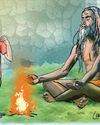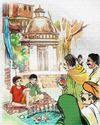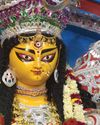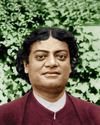Shamatha, Vipashyana, Buddhanupashyana and Buddhanusmriti

An explanation as to the types of meditation in vogue is in order here. Shamatha and Vipashyana or Vidarshana (Pashyana or Darshana means to see in an ordinary way; Vipashyana or Vidarshana means to see in a special way, i.e., with insight) meditations are practised in South Asia and other countries which follow Theravada (the way of the Elders) Buddhism. Lord Buddha presented the technique of Vipashyana meditation in the Mahasatipatthana Sutta or Mahasmritipratishthana Sutra / Satipatthana Sutta or Smritipratishthana Sutra. He delivered this Sutra in Kammassadhammam near Delhi. The Mahasatipatthana Sutta is found in the Digha (Dirgha) Nikaya and the Satipatthana Sutta is found in the Majjhima (Madhyama) Nikaya. Zen Buddhism is practiced in East Asia, that is, in China, North and South Korea, Taiwan and Japan, which are among the countries that practice Mahayana (the great vehicle) Buddhism. In fact, Zen is one of the eight schools of Mahayana Buddhism. Meditation is something that cannot be fully explained in words, it has to be experienced to be understood completely.
Denne historien er fra May 2018-utgaven av The Vedanta Kesari.
Start din 7-dagers gratis prøveperiode på Magzter GOLD for å få tilgang til tusenvis av utvalgte premiumhistorier og 9000+ magasiner og aviser.
Allerede abonnent ? Logg på
Denne historien er fra May 2018-utgaven av The Vedanta Kesari.
Start din 7-dagers gratis prøveperiode på Magzter GOLD for å få tilgang til tusenvis av utvalgte premiumhistorier og 9000+ magasiner og aviser.
Allerede abonnent? Logg på

Panchakroshi Parikrama of Varanasi
At the snow-capped Kailas, the Divine Lord Shiva was seated with Mother Parvati.

Gadai and the Monks
A fictional narrative based on incidents from the childhood of Sri Ramakrishna.

Chintayo momo maanosho Hori...
Sri Ramakrishna loved songs. There probably was no normal day when he did not sing some songs.

The Vedanta Vaccine
The world is still struggling under the impact of the pandemic due to Covid-19 for the last three years.

Chandrakirti's Chariot: Self in Madhyamaka Buddhism and Advaita Vedanta
The goal in Advaita Vedanta is the cessation of suffering and the attainment of true fulfillment. Suffering, according to this school, is due to ignorance of the true nature of the self and consequent erroneous identification with the body-mind.

Reminiscences of Sargachhi
Question: यद्यदाचरतत श्रेष्ठसतत्तदरेवरेतरो जनिः। ‘Whatever a superior person does, others do the same thing!’ (Gita 3:21) – What does this statement mean?

THE AUTUMN FESTIVAL
A fictional narrative based on incidents from the childhood of Sri Ramakrishna.

Bards of Guruvayur: Vilwamangalam II
Saints of India

In the Universal Mother’s Divine Playground
Swami Vivekananda never taught the worship of Mother Kali. In a letter to Mary Hale he writes, “Kali worship is not a necessary step in any religion.

Swami Vivekananda: A Sportsman Par Excellence
In various books and articles, Swami Vivekananda has been called a spiritual leader, a prophet, a patriot, a social reformer, a philosopher, a yogi, a writer, an orator, an educationist, a musician, and so on.